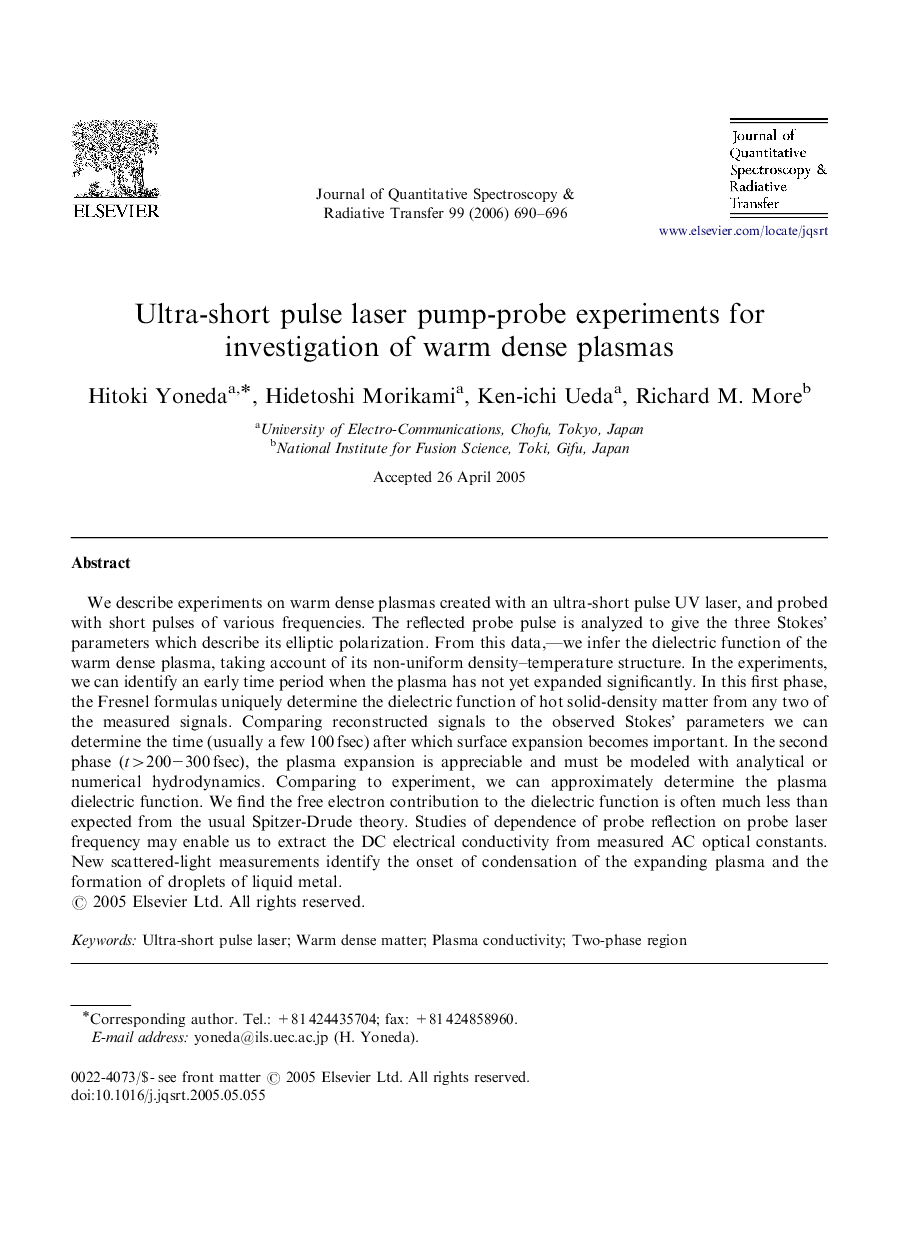| Article ID | Journal | Published Year | Pages | File Type |
|---|---|---|---|---|
| 5431135 | Journal of Quantitative Spectroscopy and Radiative Transfer | 2006 | 7 Pages |
We describe experiments on warm dense plasmas created with an ultra-short pulse UV laser, and probed with short pulses of various frequencies. The reflected probe pulse is analyzed to give the three Stokes' parameters which describe its elliptic polarization. From this data,-we infer the dielectric function of the warm dense plasma, taking account of its non-uniform density-temperature structure. In the experiments, we can identify an early time period when the plasma has not yet expanded significantly. In this first phase, the Fresnel formulas uniquely determine the dielectric function of hot solid-density matter from any two of the measured signals. Comparing reconstructed signals to the observed Stokes' parameters we can determine the time (usually a few 100Â fsec) after which surface expansion becomes important. In the second phase (t>200-300fsec), the plasma expansion is appreciable and must be modeled with analytical or numerical hydrodynamics. Comparing to experiment, we can approximately determine the plasma dielectric function. We find the free electron contribution to the dielectric function is often much less than expected from the usual Spitzer-Drude theory. Studies of dependence of probe reflection on probe laser frequency may enable us to extract the DC electrical conductivity from measured AC optical constants. New scattered-light measurements identify the onset of condensation of the expanding plasma and the formation of droplets of liquid metal.
